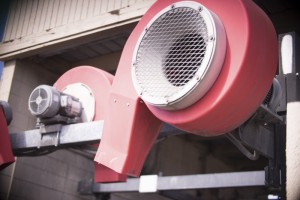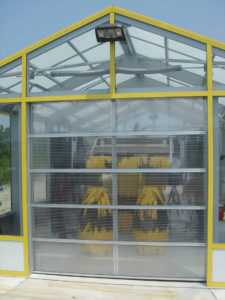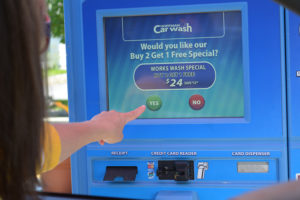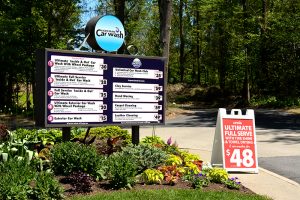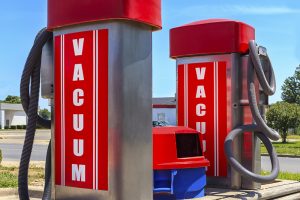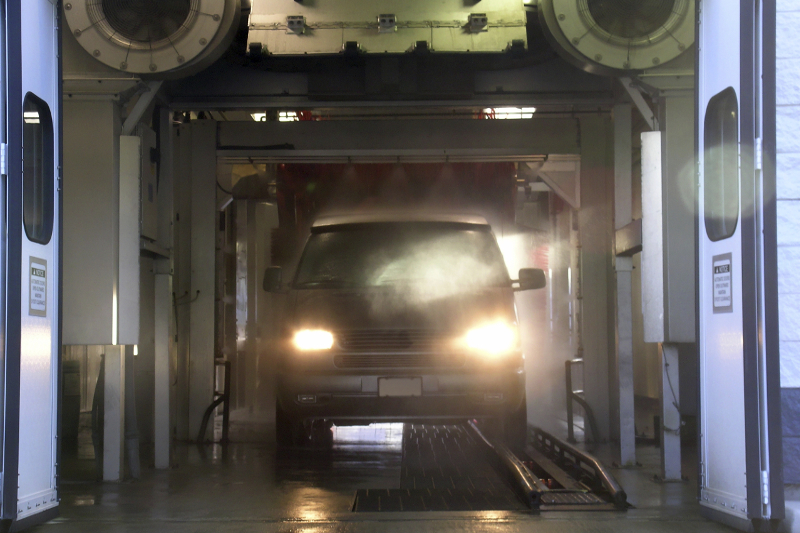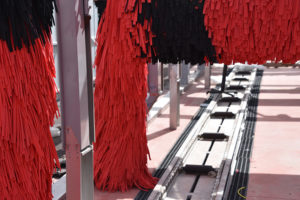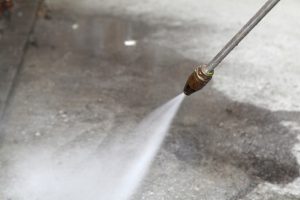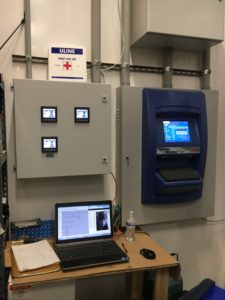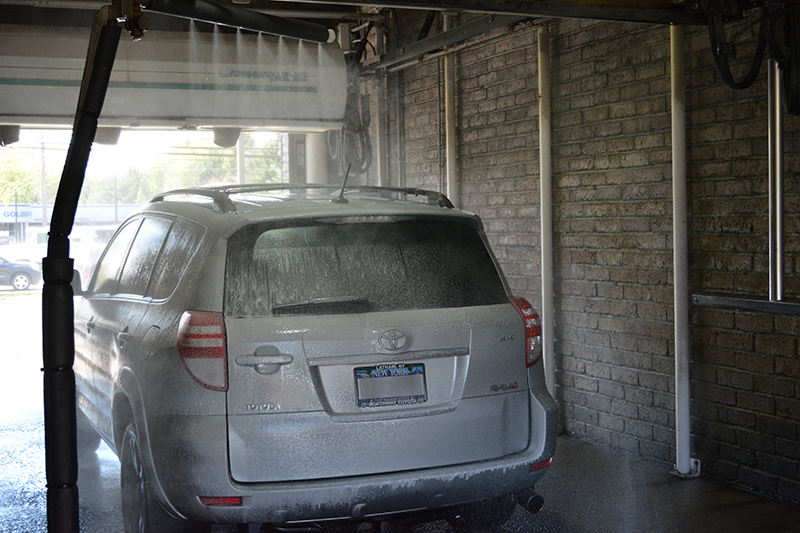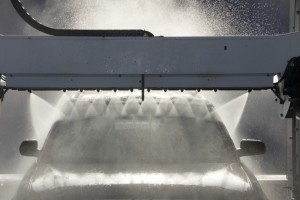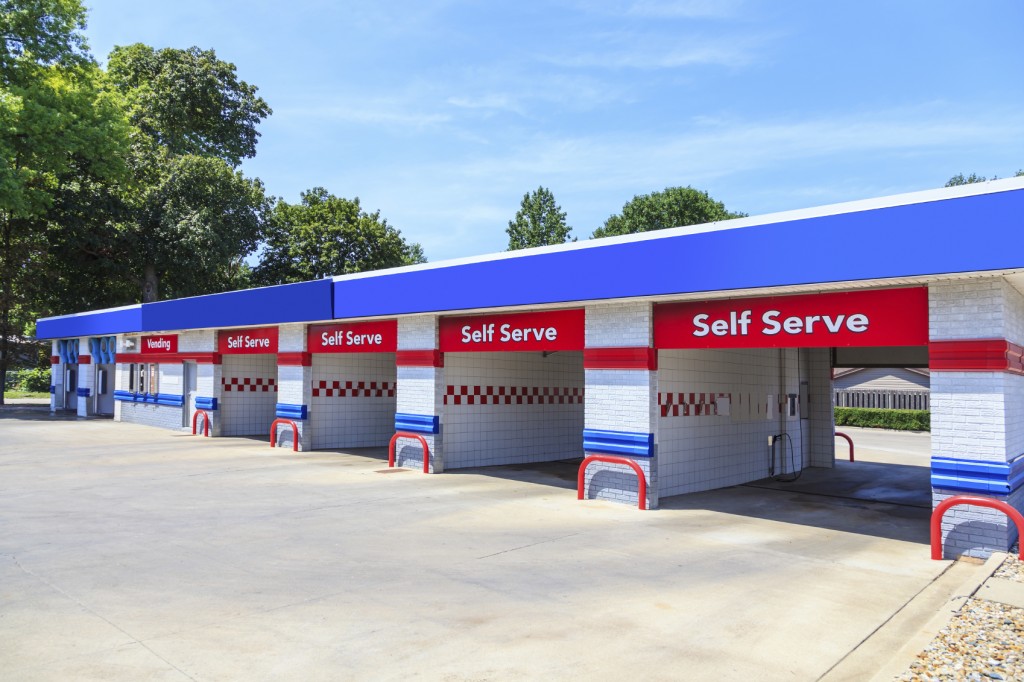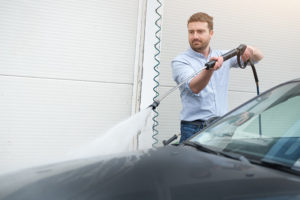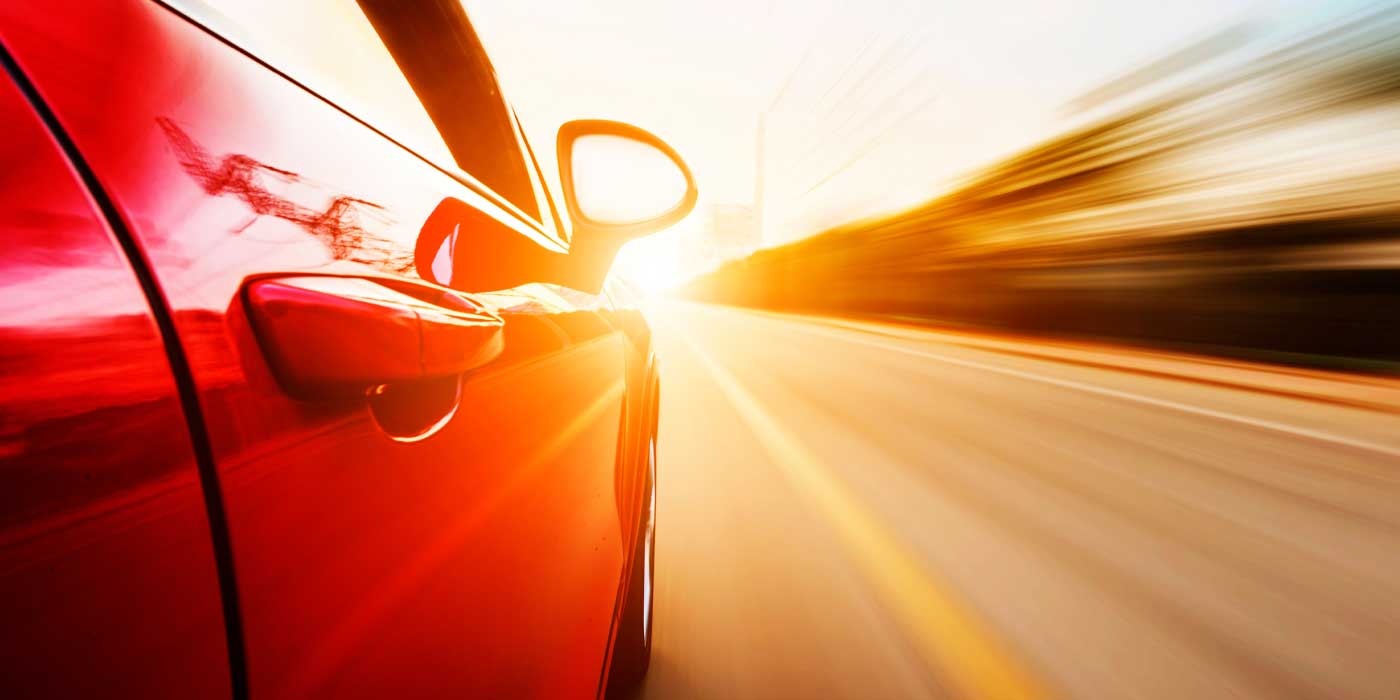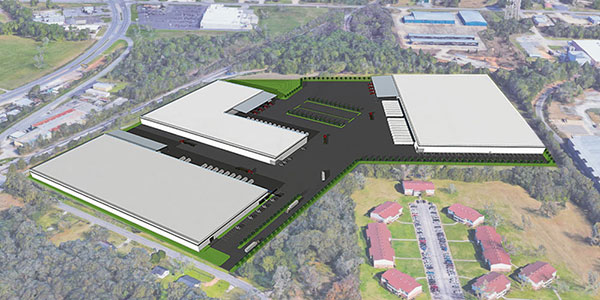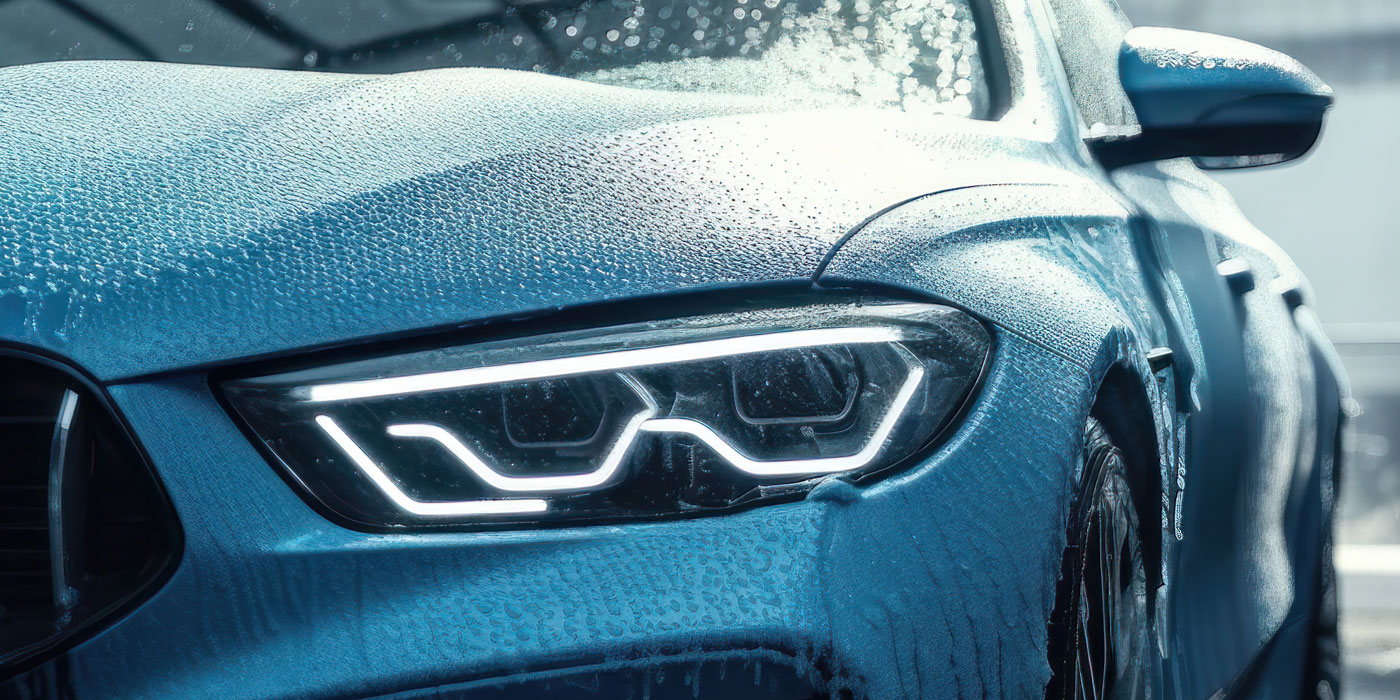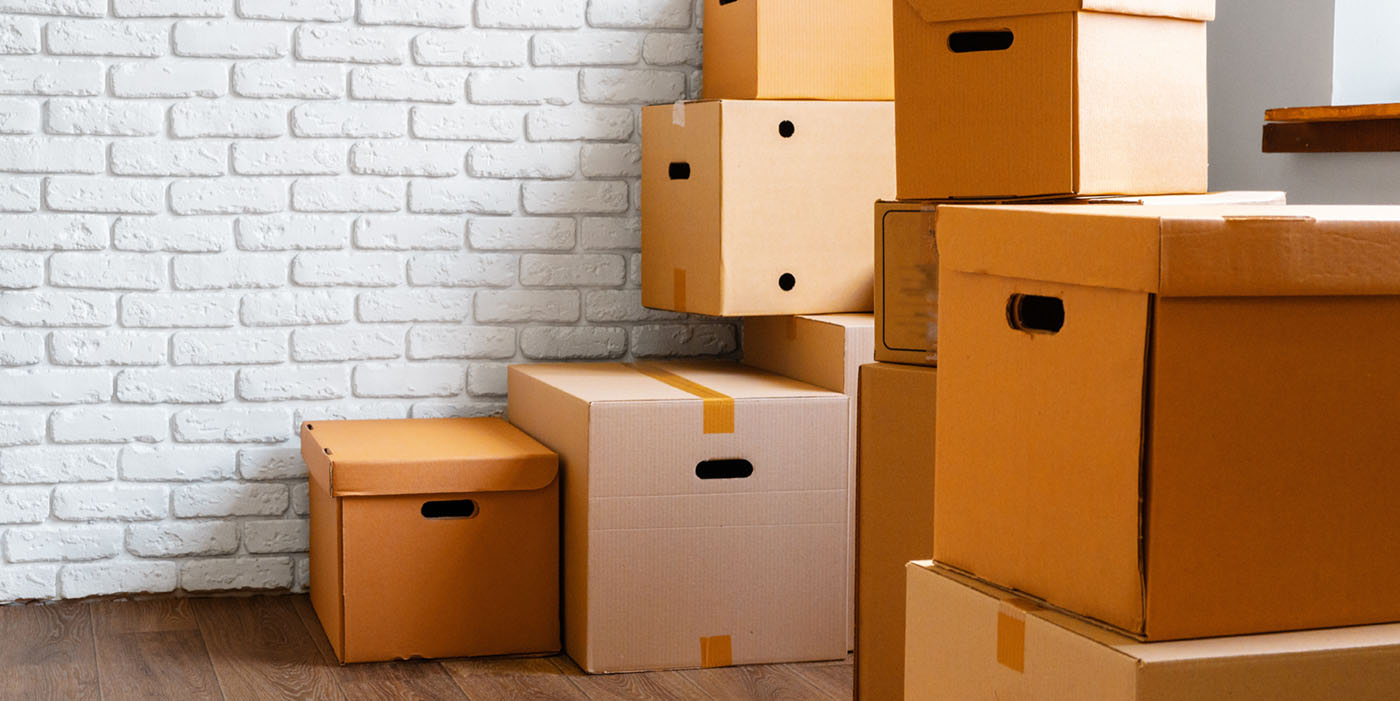A carwash is one giant puzzle made up of several smaller pieces — i.e. carwash equipment — that create a cohesive picture. The average customer recognizes that, like a puzzle, a carwash is made up of these smaller parts, but he or she focuses more on the big-picture item: a building or bay that takes in a dirty car and spits out a clean one.
No time to read this article? Listen to it instead!
But, as an owner or operator, your job is to deconstruct the puzzle and determine which pieces you need to effectively operate your carwash. In this article, we’ll provide a breakdown of the major pieces of carwash equipment.
Also, remember that routine maintenance for every piece is key to ensuring that your carwash equipment lasts for several years, upwards of 10 or more. To determine the best maintenance routine for each piece, follow manufacturers’ recommended maintenance schedules.
Carwash equipment for all carwash types
Blowers/dryers
As the name suggests, dryers are the vital pieces of equipment that blow water off vehicles at the conclusion of the wash process. Customers expect their vehicles to be dry after a wash and may become displeased if they have to towel it off themselves. “The most efficient dryer systems have a balance of carefully placed air producers and various options that enhance performance. Those options can include oscillating nozzles and air stream direction-changing nozzles to help dry rear areas of vehicles,” adds Archie Johnson, president of The Dryer Pros.
Another fitting option for many dryers is a silencer package to reduce noise. Dryers can easily be one of the noisiest pieces of carwash equipment at the carwash, but these packages can keep you within the acceptable OSHA regulations of 85 decibels for an eight-hour workday.
Further, Cheryl Dobie, owner of Aerodry Systems LLC, notes dryers are not one-size-fits-all. “While it is true that conditions specific to the dryer, such as horsepower and configuration, may influence the outcome, they are only part of the total equation. Any dryer’s performance can be enhanced or impeded by the process that precedes the dryer,” she says.
Related:
- The importance of sound suppression in dryers
- Blow away the competition
- How to winterize carwash dryers
- Six maintenance tips for carwash dryers
- The vital role of dryers at the carwash
Brushes
The quality of your carwash’s brushes can make or break your business. Because brushes are used extensively, they could wear out sooner than other pieces of equipment; as a result, it’s usually best to invest in higher quality brushes from the start in order to maximize their usefulness and save money in the long run.
In conveyor/tunnel carwashes, the main brushes used are top brushes, which descend on an arm from above and roll over the top of the vehicle; wraparounds, which stand on the sides of the tunnel and spin to clean the front, sides and rear of the vehicle; mitter curtains, which are suspended lengths of brush that oscillate to clean the top surfaces of vehicles; wheel and tire brushes; and rockers/low side washers (LSWs), which sit low and spin to clean the rocker panel area of a vehicle.
Recent closed cell foam technology in brushes has allowed for cleaner, shinier cars. In closed cell foam brushes, disconnected, microscopic bubbles in the foam prevent dirt and liquid from seeping into the brush. In addition, this technology is gentler on vehicles since the brushes do not absorb water and weigh significantly less. All of these brushes can be manufactured with this technology and have contributed to a resurgence in popularity for IBA brushes (which can include wraps and top brushes).
Self-serve foam brushes and car-prep brushes, on the other hand, are usually made of hog’s hair. The former is necessary to have in a self-serve carwash bay so that customers can wash their vehicles, and the latter is generally used by attendants to prep cars by removing tough, stuck-on debris before entering a conveyor/tunnel carwash.
Related:
Doors
Carwash doors are meant to keep noise, water and chemicals in and any natural elements out. Especially for IBAs, doors also help to manage traffic flow, letting customers know the proper times to enter and exit the bay. Doors are primarily used on self-serve bays during the winter season in order to keep winter weather out and to keep customers warmer inside.
While there are several different types of doors, two have emerged as the best options for carwashes: polycarbonate and vinyl. These doors are meant to withstand the harsh environment of a carwash and not deteriorate like certain metal doors can. While polycarbonate doors provide better security and insulation, vinyl doors roll up faster and have a knock-out ability.
Related:
- Choosing the right carwash doors
- 6 system checklist for winterizing carwash doors
- The evolution of carwash doors
- Are doors really necessary?
Payment kiosks
Unless you have a carwash attendant handling your payment transactions, a payment kiosk for your carwash is required. Point-of-sale (POS) systems are optimal for conveyor/tunnel and IBA washes, while meter boxes are preferable for self-serves.
Today, POS systems can handle not only payment processing but also tunnel operations and human resource tasks. POS systems coordinate with a tunnel controller or IBA system to give the customer the wash he or she purchases; furthermore, they can integrate with your wash’s accounting software to make revenue computations easier. In addition, since customers are making transactions through these systems, the kiosks can even help upsell them when paired with the proper messaging and programming.
Meter boxes at self service carwashes provide the same basic payment transaction service as POS systems but are better tailored for this type of carwash. They allow a customer to insert coins, bills or cards; select the specific functions desired (using a row of labeled buttons); and start the clock. According to David DuGoff, owner of College Park Car Wash, having a neat column of buttons indicating the services and placed in the proper order can also help your customers out. “Use wax after soap, right? How is the customer supposed to know? You have to make it easy for them so that they leave feeling good about using your self-serve equipment,” he advises.
Furthermore, another payment device that DuGoff recommends having at a self-serve is a bill changer. “People come with $20 bills and want to spend some of it, not all, at your carwash,” he says. Many types of available bill changers can dispense tokens, coins and bills. In fact, DuGoff adds, if your carwash uses tokens, some changers even allow customers to swipe a credit card and receive tokens in exchange.
Related:
Signage
Signage, while not equipment used in the wash process itself, is an important part of the customer experience, as it can either entice, deter, inform or confuse customers. Obviously, you want your signage to entice and inform rather than deter and confuse. Brightly-lit, colorful, engaging signs that are well-maintained (i.e., they don’t flicker or have burnt out bulbs) can pull a customer off the road and to your wash.
Large, colorful menus with easy-to-read fonts and just enough description about your wash packages (not too much or too little) set before the payment terminals can help your customers decide on their purchases beforehand, increasing speed and efficiency at the wash.
At self-serves, signage relaying explicit instructions inside the wash bays will help customers troubleshoot. As for the sign itself, DuGoff recommends, “Keep the language short and simple, use illustrations and use Spanish and English.”
Related:
- How carwashes can stand out with signage: Part one and Part two
- Crafting the ideal carwash menu
Water treatment systems
Water treatment systems that use recycled water are quickly becoming required equipment for carwashes in many parts of the country. Not only can they help reduce your water bill, but they make your carwash more environmentally friendly, which can help you in the face of both government regulation and customer hesitation. There are three types of water treatment systems commonly used in professional carwashing: reverse osmosis (RO), water reclaim and water restoration.
RO systems use a pump that increases pressure on the feed side of equipment to force water through one or more semipermeable membranes in order to remove 96 to 99 percent of all total dissolved solids (TDS) from it. Implementing an RO system allows a carwash to provide a “spot-free rinse” at the end of a wash cycle, which will allow all glass, chrome and painted surfaces on a vehicle to dry spot-free.
Water reclaim systems — usually standalone systems — allow your carwash to draw water from the carwash settling tanks, process it and send the clean water back to the equipment to reuse. Reclaim systems vary in the amount of water they can process for reuse. Those that achieve 100 percent are called “closed-loop” systems, meaning that no water leaves the property naturally except through evaporation and the remnants on vehicles; it must be hauled away instead.
Water restoration systems use cyclonic separation to filter solids down to five microns. In terms of odor and clarity management, these systems use aeration to induce oxidation.
Water storage tanks, which store runoff water, are needed for water treatment systems and are typically underground. They are also known as clarifier, settling or oil/water separator tanks. These tanks allow heavier sediment from the wash water to settle to the bottom while lighter sediment, such as oil, rises to the top. At times, these tanks will need to be pumped out and have the wastewater hauled away by a licensed operator to be processed.
Related:
- Water’s role in the carwash
- A carwash’s guide to reverse osmosis
- Fundamentals of water management
- Proper pipe maintenance for wastewater disposal
Vacuums
There are two primary vacuum systems used at carwashes: central vacuum systems and canister vacuums. According to Wes Taggart, CEO and principal of AutoVac, “Central vacuum systems have really taken over the standalone vacuum canister market in recent years, greatly due to the high demand for new express carwash sites. A standalone vacuum still has its place for washes and/or fuel stations with less traffic and footprint, but the express central vacuum system has become one of the greatest attractions of both new and retrofitted carwashes.”
With a central vacuum system, a single, central motor in the equipment room or down the line provides the power and suction for multiple vacuum hoses. By equipping it with a variable frequency drive (VFD), this system even has the power to regulate how much energy it uses (and, therefore, how much suction it provides) based on the amount of customers using the hoses. Here, hoses are generally suspended full-length from arches or booms.
In contrast to the central vacuum system, each standalone canister vacuum has a high-speed motor inside it. As such, these vacuums tend to be louder and noisy, and according to Taggart, another reason customers typically prefer the central vacuum system to these high speed vacs. They also require more maintenance than a central vacuum system, since you are dealing with multiple canisters as opposed to one central system. In addition, hoses need to be wrapped around an arm on the canister for storage. Payment terminals can be attached to both types of vacuum.
Related:
Conveyor/tunnel carwash equipment
Conveyor/tunnel carwashes, which are most often used in the express exterior, full service and flex-serve formats, are generally the most expensive carwashes to build and operate in part because of the multitude of equipment needed. However, what you can expect to spend for this equipment will vary.
According to Mark Jones, engineering manager at PECO Car Wash Systems, depending on how much carwash equipment you purchase, you might spend anywhere from $150,000 to $350,000.
On the same token, Jim Utterback, director of marketing for Motor City Wash Works, adds that the size of your tunnel — from a 50-foot mini tunnel to a 150-foot express tunnel — will dramatically affect this number; he broadens the range to $200,000 to $750,000.
Regardless, you can easily expect to spend a couple hundred thousand dollars solely on carwash equipment for this type of business. So, where is your money going? In addition to the carwash equipment mentioned in part one of this article, the experts we interviewed added the following.
Air compressors
Air compressors convert electrical energy into potential energy in the form of pressurized air, which can then be delivered to pneumatic or robotic tools/equipment or used directly. Such tools include pneumatic pumps and air controls (such as for roller ups, flips and retracts). Jones notes that an often overlooked piece of additional equipment for air compressors is an air dryer. “Clean, dry air reduces maintenance costs and time,” Jones notes.
Related:
Anti-collision systems
While not integral to the wash process itself, experts argue that anti-collision systems are practically necessary in tunnel washes these days. These systems detect vehicles at the end of the conveyor and will automatically stop and start the conveyor to prevent collisions. Therefore, not only do they prevent accidents from happening, but they also reduce income loss and can keep tunnel exits safer for employees and customers.
Related:
Arches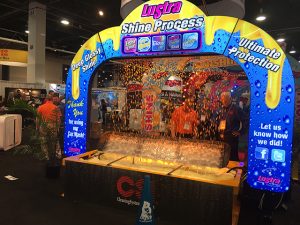
Arches dispense water and cleaning solutions onto cars as they pass underneath. There are two modern types of arches: entry arches and application arches.
An entry arch is the first arch a customer will see in the tunnel. While application arches have the option of being bare-bones equipment, entry arches give you the opportunity to make a great first impression using colorful design and messaging. This sort of arch can provide the customer with information about how to behave during the wash (car in neutral, foot off the brake, etc.) as well as reaffirm which wash was purchased. They can even provide light and animation shows.
Application arches can be as colorfully designed as the entry arch and hide the actual dispensing equipment, or they can be simple dispensing arches themselves. A carwash will have multiple arches for specific uses.
One such arch, for instance, would be the pre-soak arch, which delivers water and a cleaning solution to a car before it enters the tunnel in order to help loosen dirt and grime, such as bugs and salt, on a car. Rinse arches dispense water, and applicator arches dispense soaps and chemicals. These chemicals may include extra revenue-generating services, such as triple foam, clear-coat sealant, protectants and waxes.
Related:
Applicator pump stations
Applicator pump stations properly dilute chemical solutions with water and mix them. Thereafter, they deliver those solutions to the corresponding application devices, such as foam applicators and arches.
Conveyors
Conveyors pull or push a car through the wash tunnel. There are two types of conveyors: over-under and surface conveyors. Over-under conveyors require a trench, and the rollers will return to the start of the conveyor by travelling underneath it. Surface conveyors do not require a trench, and the chains and rollers returning to the entrance travel beside the conveyor. According to Utterback, “Over-under conveyor design is the design of choice.”
Chains connect the conveyor systems to the vehicle via the rollers, which either pull the front wheel or push the rear wheel. In addition, a correlator is required at the entrance to the wash conveyor/tunnel. The correlator is an in-ground mechanism used to align the vehicle wheels with the conveyor by allowing the vehicle to slide laterally.
However, as car technology continues to evolve and sensors permeate new cars, other types of conveyors, such as flat-belt conveyors, which transport all four wheels at once and do not make them roll (preventing anti-braking technology from taking effect), are beginning to surface.
Related:
High pressure equipment
High pressure equipment uses pressurized water to flush dirt out of areas where brushes and other friction equipment cannot reach. There are high pressure side washers, top washers and washers that target the lower portion of the vehicle. According to Utterback, these components are often overlooked by new carwash owners, as they feel they don’t need them. However, since this equipment can remove tough grit like mud and salt, it can only improve the wash process when paired with friction equipment.
Prep guns, or pressure washers, use high pressure water to prep hard-to-clean vehicles and wash down tunnel equipment and buildings.
Related:
Tunnel controllers
Tunnel controllers are essential to tunnel carwashes, as they manage a variety of tunnel tasks, from inputs and outputs to accurate wash control, including the timing of wash components and the application of chemicals. The controller measures vehicles and serves as a go-between for the equipment and motor-control center, turning equipment on and off depending on the wash selected.
Tunnel controllers may also include vehicle profiling technology, which uses sound waves to map out a profile of the vehicle. This technology can be useful especially for problem vehicles such as pickup trucks, which present issues with open beds. Tunnel controllers with vehicle profiling, for instance, can keep a top wrap from descending into a truck bed (or make it descend only partially in order to clean the back window of the truck) or keep arches from spraying chemicals into it.
Related:
Undercarriage wash
Undercarriage wash applicators rinse the underbody of a vehicle by delivering high volumes of wash water in order to remove dirt and salt. These applicators can also be used to deliver rust inhibitors.
IBA carwash equipment
IBA carwashes are generally ordered as compact, whole structures from a manufacturer. While this makes the purchase process easier, there are two different IBA formats that will determine the type of carwash equipment used: cloth friction (rollover) and touch-free.
While cloth friction washes use brushes to clean vehicles, touch-free systems rely on arms with nozzles to spray water and chemicals onto a vehicle. As we have already discussed brushes and dryers in part one of this article as well as chemical delivery systems like the aforementioned applicator pump station, we have only to discuss one other aspect of IBA carwash equipment: nozzles. Note: Nozzles are also components of larger conveyor carwash equipment, such as arches, as well as self-serve wands.
Nozzles
Though small in comparison to other carwash equipment, nozzles can have a high impact on wash quality, and therefore, on profitability. Nozzles come in a wide variety of types (flat-spray, high-impact streams, low-impact wide angles, etc.), and choosing the wrong one can increase operating costs as well as shorten the life of pumps. While nozzles are certainly important to rollover washes, they are critical to touch-free washes, as the nozzles should perform uniformly in order to achieve total coverage and optimal wash results. Improved high pressure chemical delivery systems and nozzles are not only leading to better wash results nowadays, but they also help owners cut down on costs.
Related:
Self service carwash equipment
In terms of numbers, the amount of self service carwash equipment required falls in between the single entity of the IBA and the multitude of parts needed for a tunnel carwash. However, self-serve carwashes have multiple bays and, therefore, require multiples of the same equipment.
As far as pricing goes, David DuGoff, owner of College Park Car Wash, says, “There’s a pretty wide range in pricing for equipment. We used to say, expect to pay about $25,000 per bay for equipment. I was never sure what that included and left out. I wouldn’t be surprised if high-end equipment will come in closer to $40,000 to $50,000 [per bay].”
He also notes that it’s especially important to keep spare parts on hand, so you can stay open regardless of whether or not suppliers are available when the need strikes.
In addition, he advises keeping all the manuals to your carwash equipment so that, once it is outdated and your manufacturer no longer has the manuals online, you can still order the parts you need.
In this vein, DuGoff offers some general maintenance advice. “Develop a keen ear and sharp eye. You need to learn what a normal sound is and what is not. A small drip on the floor means something. Pay attention to these clues early, and fix them on your schedule. Don’t wait until the line of customers is out to the street and you’re down.”
Related:
Booms
Booms are swiveling, metal arms meant to both deliver water and chemicals to the bays and to keep hoses from dragging on the floor. Booms can be mounted either to the ceiling (providing 360-degree coverage) or to the wall (providing 180-degree coverage). They make it easier for customers to work fully around their vehicles.
Guns, hoses and wands
Hoses connect the booms to the guns to deliver water and chemicals.
Guns are the trigger mechanism allowing customers to turn the chemical and water spray on or off.
Wands attach to the end of the gun and are fitted with an assortment of spray tips and nozzles (see above).
According to DuGoff, at a minimum, you will need one high pressure gun and one foam brush per bay. Furthermore, DuGoff adds, there are several additional hoses you can hang from the ceiling, including an air blower, wheel brush, low pressure clear-coat or wax and more.
“As a note of caution,” he warns, “this is not a case where more is better. Too many hoses become confusing for the customer and get tangled and can become frustrating for the customer to navigate. You want to wow the customer but not overwhelm them.”
Pump stands/racks
Pump stands take your incoming water, whether cold or hot (the latter of which requires a boiler, which DuGoff highly recommends for self-serves, since chemicals are more effective hot than cold), and mixes the chemical solutions. The pump stand also sends those solutions to the bays.
The pump stand usually has both a high pressure pump for each bay for the water and a low pressure pump for each low pressure solution (soaps and waxes). The rack also includes an electrical cabinet that takes the signals sent from the bays and turns on the appropriate pump and opens the appropriate valve to send out the requested water or chemical.
Now that we’ve taken a look at the basic equipment you need to start a carwash, you can start putting together the puzzle pieces of your wash and create a cohesive picture. And remember, if you’re curious about other carwash equipment, parts and lingo, be sure to check out our online glossary at www.carwash.com/glossary-of-terms. Furthermore, you can find carwash equipment manufacturers and providers in our online buyers guide directory.


